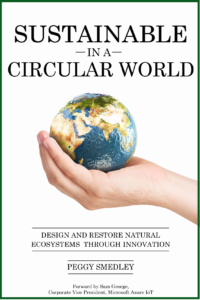What are the top driving forces for smart buildings technologies today? We already know the U.S. EPA (Environmental Protection Agency) suggests that on average Americans spend about 90% of their time indoors, which is probably even higher during a pandemic. Here pollutants are two to five times higher than outdoors. Thus, the questions that linger for many corporate owners and facilities managers for 2021 are: how do we get people back to their offices in a safe and sustainable way? And how do we provide them information in a realtime manner so they feel more comfortable going into those spaces?
We also know 40% of the world’s CO2 emissions comes from buildings and construction—quite frankly buildings are one of our largest polluters. A recent conversation with Chris Collins, vice president, systems transformation, digital energy, Schneider Electric, puts this into perspective. “Greater than 30% of the space is currently wasted. And I take it back into my office here in Dallas that I haven’t seen in nine months.”
He goes on to explain, “In my role, I travel quite extensively and I had an office that was dedicated to myself and it was a pretty big space. But when I was in the office, I’d notice that there was very poor utilization of the space, right? Because a lot of executives just like myself, that had dedicated space, that were maybe only using it 30% of the time. And take a step back to 40% of the world’s CO2 emissions comes from buildings, but we estimate that over 30% of building energy usage is really wasted energy.”
Enter technology. Well, not exactly. As Collins points out, this isn’t new technology—the technology to manage spaces better and improve efficiency for the building occupants, facilities manager, and building owners has been around for a long time. What is new is the pandemic, and the worker shortage, and now facilities managers are turning to technology more readily than before.
Collins points to the worker shortage as a big driver for the need for technology today. In the past there might have been an entire crew to maintain a building, but with the “industry aging up,” as he says, people aren’t entering the workforce. At the same time, facilities managers are being asked to do more with less. “Rather than having a facility department per building, now you might have the sole manager that’s managing a portfolio of six buildings. Well, how can you do that? You do that with technology. You do that with connectivity. You do that by providing him with tools that make his job easier, where he doesn’t have to go and diagnose it anymore.”
Couple this all with the COVID-19 pandemic, which has sped up digital transformation across all industries—with some reports predicting the pandemic has condensed technology adoption which most likely would have taken three years at a normal pace into a single year.
“I do believe anytime you go through a major crisis like this—whether it’s COVID, whether it’s a recessionary period—I think what it does is really accelerate the changes that are already happening,” remarks Collins. “The technology to make buildings more sustainable and make a better experience for the occupants is not new, it’s been around for quite a while. I think what this really highlights is people are starting to understand that because of this crisis, we have to use our abilities differently. It’s really heightened the need for that digital connection to our buildings.”
In my new book, Sustainable in a Circular World, I build on this topic by looking at how we can design and restore natural ecosystems through innovation. As I explain in the book, the next decade will bring critical changes to the world. We will need to usher like-mindedness and forge new pathways to address environmental need through a common sustainable and circular economy. Will you join us?
Want to tweet about this article? Use hashtags #construction #IoT #sustainability #AI #5G #cloud #edge #futureofwork #infrastructure #digitaltransformation #green #ecosystem #environmental #circularworld


